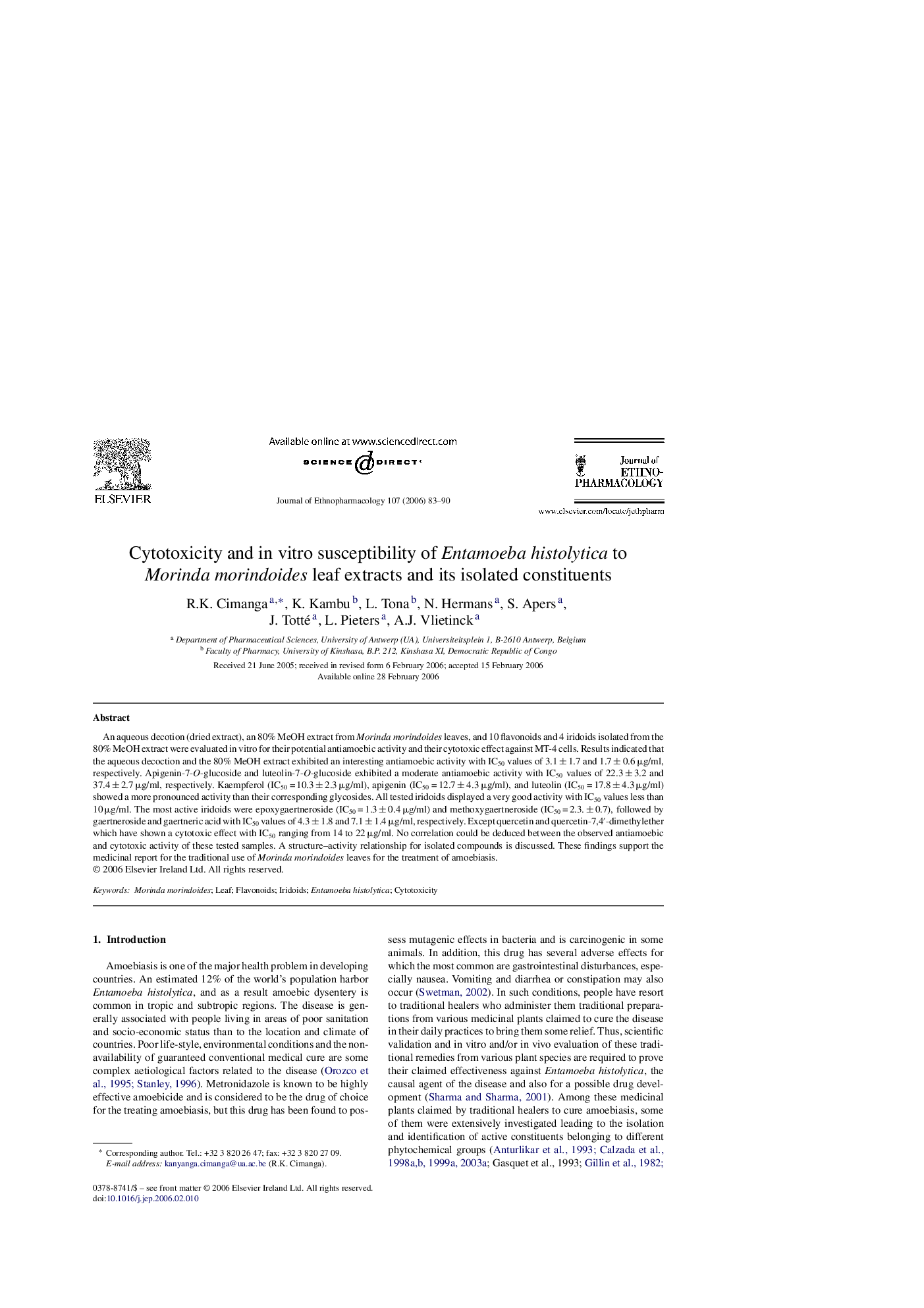| Article ID | Journal | Published Year | Pages | File Type |
|---|---|---|---|---|
| 2547709 | Journal of Ethnopharmacology | 2006 | 8 Pages |
An aqueous decotion (dried extract), an 80% MeOH extract from Morinda morindoides leaves, and 10 flavonoids and 4 iridoids isolated from the 80% MeOH extract were evaluated in vitro for their potential antiamoebic activity and their cytotoxic effect against MT-4 cells. Results indicated that the aqueous decoction and the 80% MeOH extract exhibited an interesting antiamoebic activity with IC50 values of 3.1 ± 1.7 and 1.7 ± 0.6 μg/ml, respectively. Apigenin-7-O-glucoside and luteolin-7-O-glucoside exhibited a moderate antiamoebic activity with IC50 values of 22.3 ± 3.2 and 37.4 ± 2.7 μg/ml, respectively. Kaempferol (IC50 = 10.3 ± 2.3 μg/ml), apigenin (IC50 = 12.7 ± 4.3 μg/ml), and luteolin (IC50 = 17.8 ± 4.3 μg/ml) showed a more pronounced activity than their corresponding glycosides. All tested iridoids displayed a very good activity with IC50 values less than 10 μg/ml. The most active iridoids were epoxygaertneroside (IC50 = 1.3 ± 0.4 μg/ml) and methoxygaertneroside (IC50 = 2.3. ± 0.7), followed by gaertneroside and gaertneric acid with IC50 values of 4.3 ± 1.8 and 7.1 ± 1.4 μg/ml, respectively. Except quercetin and quercetin-7,4′-dimethylether which have shown a cytotoxic effect with IC50 ranging from 14 to 22 μg/ml. No correlation could be deduced between the observed antiamoebic and cytotoxic activity of these tested samples. A structure–activity relationship for isolated compounds is discussed. These findings support the medicinal report for the traditional use of Morinda morindoides leaves for the treatment of amoebiasis.
